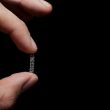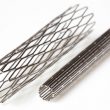Percutaneous coronary intervention improves angina related quality of life in AMI patients with multivessel disease. The COMPLETE study has shown patients receiving complete revascularization compared against culprit-only revascularization presented lower cardiovascular rate or AMI at 3-year followup. ACC featured a COMPLETE subanalysis assessing angina related quality of life. It included 4041 patients, mean age 62,<a href="https://solaci.org/en/2022/04/11/acc-2022-complete/" title="Read more" >...</a>
ACC 2022 | PACMAN AMI
Atherosclerosis plaque causing AMI is often large in volume, high in lipids and have a thin fibrous cap. Statins often reduce atherosclerosis progress, but the impact of PCSK 9 inhibitors (alirocumab) after acute coronary syndrome is scarcely known. The aim of this study was to determine the effect of alirocumab using intracoronary imaging (IVUS, OCT,<a href="https://solaci.org/en/2022/04/08/acc-2022-pacman-ami/" title="Read more" >...</a>
CRUNCH Registry: An Option for Underexpanded Stents
Coronary calcification hinders both stent transfer and implantation, and has been associated with a higher risk of complications. Coronary perforation is the worst of them. In turn, these calcifications affect the preparation of coronary plaque, resulting in an underexpanded stent (US), which is a strong predictor of restenosis and early thrombosis. For the management of<a href="https://solaci.org/en/2022/04/08/crunch-registry-an-option-for-underexpanded-stents/" title="Read more" >...</a>
STEMI: Can We Omit Stenting?
The recommended treatment for ST elevation acute myocardial infarction (STEMI) is early PCI, typically stenting. However, stent implantation always involves the risk of intravascular complications, such as stent thrombosis or restenosis. Sometimes stable flow is restored to the target vessel after initial PCI and we can omit stenting when there is no angiographically significant residual<a href="https://solaci.org/en/2022/04/04/stemi-can-we-omit-stenting/" title="Read more" >...</a>
Wire Jailing at Side Branch to Prevent Occlusion After Main Vessel Stenting: Should It Be the Standard of Care?
While the ideal treatment for coronary bifurcation is provisional stenting, this can be associated with side branch occlusion, which leads to severe adverse events. To prevent this complication, several treatments have been proposed. One of them is wire jailing at side branch before stent implantation in the main vessel. However, the actual benefit of this<a href="https://solaci.org/en/2022/03/29/wire-jailing-at-side-branch-to-prevent-occlusion-after-main-vessel-stenting-should-it-be-the-standard-of-care/" title="Read more" >...</a>
Is Cusp Overlapping Projection the New Self-Expandable Valve Implantation Technique?
In Europe and the US, aortic stenosis is the most frequent cause of valve intervention, both surgical and percutaneous, and, as we all know, TAVR has made great progress in this regard. However, this technique has an Achilles heel when it comes to self-expandable valves: definite pacemaker implantation rate is 3 to 4 times higher<a href="https://solaci.org/en/2022/03/11/is-cusp-overlapping-projection-the-new-self-expandable-valve-implantation-technique/" title="Read more" >...</a>
The Most Relevant of 2021 In Structural Heart Disease
This last year, new data in structural heart disease gave way to changes in practices and new hypotheses, when not simply further justified the already existing evidence. In this new editorial section, we share the most relevant of last year’s works to keep you up to speed on the main topics in the field. The<a href="https://solaci.org/en/2022/01/05/the-most-relevant-of-2021-in-structural-heart-disease/" title="Read more" >...</a>
November’s Most Read Studies in Interventional Cardiology in solaci.org
01- Management of Abdominal Aortic Aneurysms in 2021 Abdominal aortic aneurysms (AAA) are those of >3 cm aortic diameter. They run the risk of rupture and ensuing death by bleeding. In consequence, they are treated to repair the aneurysm before it ruptures. Read more HERE 02- Ten Commandments for 2021 Guidelines on Valvular Heart Disease Since<a href="https://solaci.org/en/2021/12/06/novembers-most-read-studies-in-interventional-cardiology-in-solaci-org/" title="Read more" >...</a>
The Most Read Articles in Interventional Cardiology in October
01- ISCHEMIA: Prognosis is Determined by Anatomy, not Functionality The ISCHEMIA study keeps providing scientific news. This work in patients with stable coronary artery disease had already shown (to our surprise) that ischemic burden does not predict 4-year mortality. Read also HERE 02- Chile Sessions 2021 | Clinical Case Contest for Young Interventionists It is with great<a href="https://solaci.org/en/2021/11/05/the-most-read-articles-in-interventional-cardiology-in-october/" title="Read more" >...</a>
First Guidelines Focused Specifically on Chest Pain Management
Many years of developing and waiting have led us to the latest guidelines published by ACC/AHA together with other societies. This is the first document exclusively dedicated to the assessment and diagnosis of acute chest pain. In this regard, we can safely say this is no mere update of a previous set of guidelines, but<a href="https://solaci.org/en/2021/11/02/first-guidelines-focused-specifically-on-chest-pain-management/" title="Read more" >...</a>








